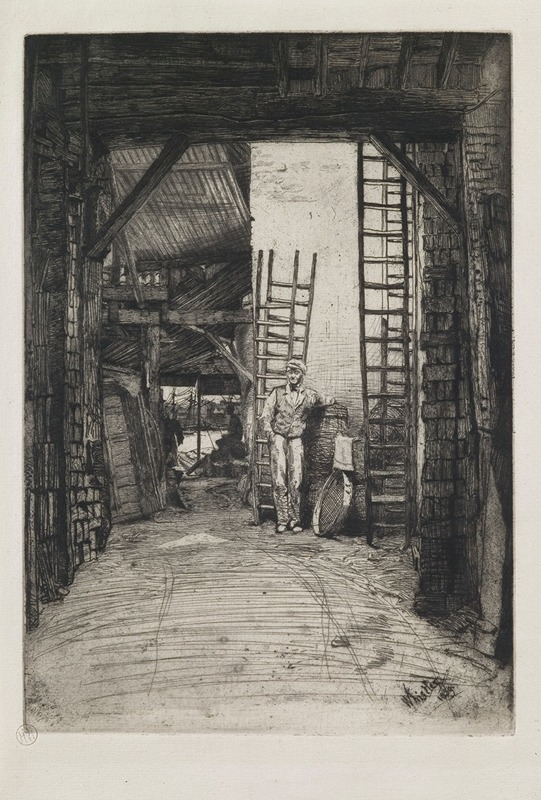
W. Jones, Limeburner, Thames Street
A hand-painted replica of James Abbott McNeill Whistler’s masterpiece W. Jones, Limeburner, Thames Street, meticulously crafted by professional artists to capture the true essence of the original. Each piece is created with museum-quality canvas and rare mineral pigments, carefully painted by experienced artists with delicate brushstrokes and rich, layered colors to perfectly recreate the texture of the original artwork. Unlike machine-printed reproductions, this hand-painted version brings the painting to life, infused with the artist’s emotions and skill in every stroke. Whether for personal collection or home decoration, it instantly elevates the artistic atmosphere of any space.
James Abbott McNeill Whistler was an American artist known for his paintings and etchings, and he played a significant role in the aesthetic movement. One of his works, "W. Jones, Limeburner, Thames Street," is part of his series of etchings known as the "Thames Set." This series was created during the early period of Whistler's career, showcasing his interest in the everyday life and industrial scenes along the River Thames in London.
"W. Jones, Limeburner, Thames Street" is an etching that captures the bustling atmosphere of Thames Street, a location known for its industrial activity during the 19th century. The etching depicts a limeburner, an individual involved in the production of lime, which was an essential material for construction and agriculture at the time. The portrayal of W. Jones, presumably the limeburner, reflects Whistler's interest in the working class and the industrial landscape of London.
Whistler's etching technique is notable for its precision and attention to detail. In "W. Jones, Limeburner, Thames Street," he employs fine lines and careful shading to convey the textures and forms of the scene. The composition is characterized by its focus on the figure of the limeburner amidst the industrial setting, highlighting the human element within the urban environment. Whistler's ability to capture the nuances of light and shadow adds depth and realism to the etching.
The "Thames Set," including "W. Jones, Limeburner, Thames Street," was influential in establishing Whistler's reputation as an etcher. The series was published in 1871 and consists of sixteen etchings that explore various aspects of life along the Thames. Whistler's work in this series reflects his fascination with the interplay between the natural and industrial worlds, as well as his skill in capturing the essence of a scene with minimalistic yet expressive lines.
Whistler's approach to art was heavily influenced by his belief in "art for art's sake," a philosophy that emphasized the aesthetic value of art over its narrative or moral content. This perspective is evident in his focus on composition, form, and the harmonious arrangement of elements within his works. "W. Jones, Limeburner, Thames Street" exemplifies this approach, as it presents a slice of life with an emphasis on visual beauty and technical mastery.
The etching is part of several collections and has been studied for its contribution to the development of etching as an art form. Whistler's work in this medium helped to elevate etching to a status comparable to painting, and his influence can be seen in the works of later artists who explored similar themes and techniques.
Overall, "W. Jones, Limeburner, Thames Street" is a testament to Whistler's skill as an etcher and his ability to capture the essence of 19th-century London. Through his depiction of the limeburner and the industrial landscape, Whistler offers a glimpse into the everyday life of the time, rendered with a focus on aesthetic beauty and technical precision.


















